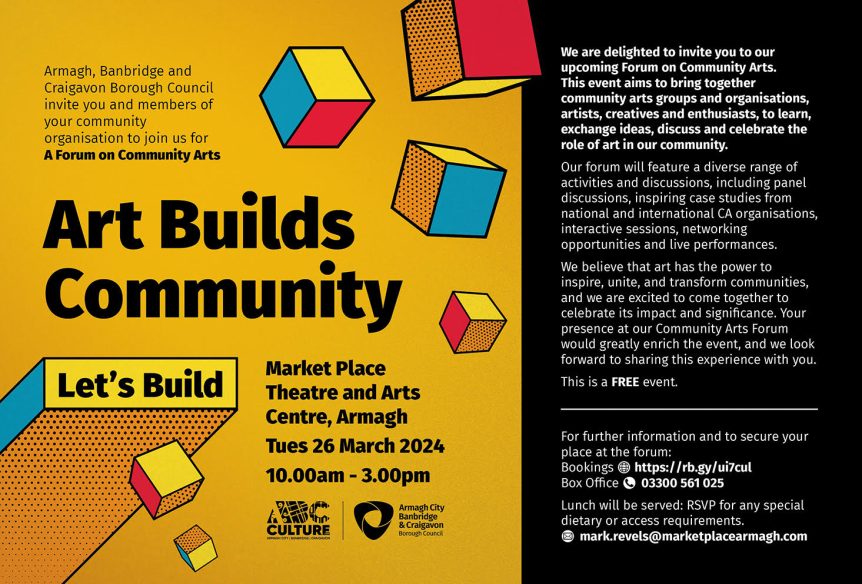How did your job come about?
The council would have had arts officers before, but they were looking for someone who was a bit more specialised in community arts. I was appointed for the Armagh, Banbridge and Craigavon area but there was particular need identified in the Banbridge and Lurgan areas because they don’t have an arts centre, they don’t have a physical space for the arts in those areas.

What will your role be?
My role is to work with community groups, organisations, charities and where we identify a need, where there is an issue which needs to be combated, whether it is social isolation, a cultural issue, or regeneration of a community, whatever it is, we will work out a way to create a project on that issue.
I hope to find those people in areas who we can work with and we will be using the arts as a creative means to bring people together to see if we can find solutions to problems. I do think creativity is often the best way to achieve that.
You have a good grounding in community arts?
Yes, I do. I worked with Down Community Arts. I started with DCA in 2010 and I finished up in 2014. I was 4 years with them and that was my first time working as an administrator of community arts. My own arts practice was always issue based and I often worked in community settings. The role with Down Community Arts was part-time so it allowed me to work in the studio, to keep up my own arts practice, as well as work in the community.

We had a very large geographical area to work in, myself and the manager, Phillip Campbell, there was only the two of us, and there was a substantial amount of need because the area was very rural and there were lots of communities experiencing extreme deprivation. At any one time we would have between 15 and 20 projects running and that meant it was extremely challenging. But it was also very rewarding because we could see first hand how much of an impact community arts could have.
A community arts approach was essential then?
Often people see community arts as an artist turning up in a community and painting a mural and that is pretty much it, rather than seeing is an artistic practice which works with the community to achieve agreed aims, whether that is just bringing people together or impacting the political situation.
I can remember that we would do projects in Newcastle, Ballynahinch, Strangford all the way to the Mournes and we always had to fight against the idea that you just brought the artist in and that was it. We were always looking to develop relationships between artists and communities, preferably over time if we could find the funding to do that.
We wanted our work to have an impact and to leave a legacy, whether it was an intergenerational legacy, or a celebration of the diverse elements of a community, or impacting anti social behaviour, whatever that issue was, we aimed to grow a project and leave a lasting impact.

And that is what you will be bringing to your new position?
Yes, certainly, and one of the ways I am hoping to do that is to organise an information event which will have an educational element regarding community arts, although it definitely won’t be death by PowerPoint, to allow people to have a better understanding of community arts.
There will be case studies, there will be international guests, from Australia for example; an organisation called Creating Australia – (see link below)
culturaldevelopment.net.au/about/creating-australia/
which has a more policy based orientation. We will also have an organisation from Kiev, Ukraine, which has been involved in work relating to conflict, especially with communities who live in conflict zones. And there will be keynote speakers, panels of artists, and there will be industry people and communities coming together as well as people hosting the event.
We are still in the process of finalising everything but I am hoping it will be an exciting event for people who are interested in learning about community arts and what this approach can achieve.

When is this event scheduled to take place?
We are aiming to pull everything together pretty quickly and the date we have put forward is Tuesday 26th March. We are getting everyone to save the date and the full schedule will be available shortly. It isn’t just for people who are living in the Armagh, Banbridge and Craigavon area, although that will be a priority but we want people from outside the area to come along and be part of the event, to further dialogue and discussion regarding community arts practise.

